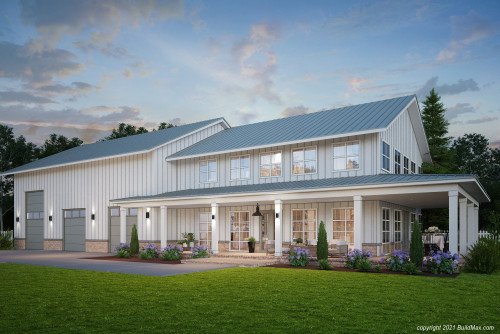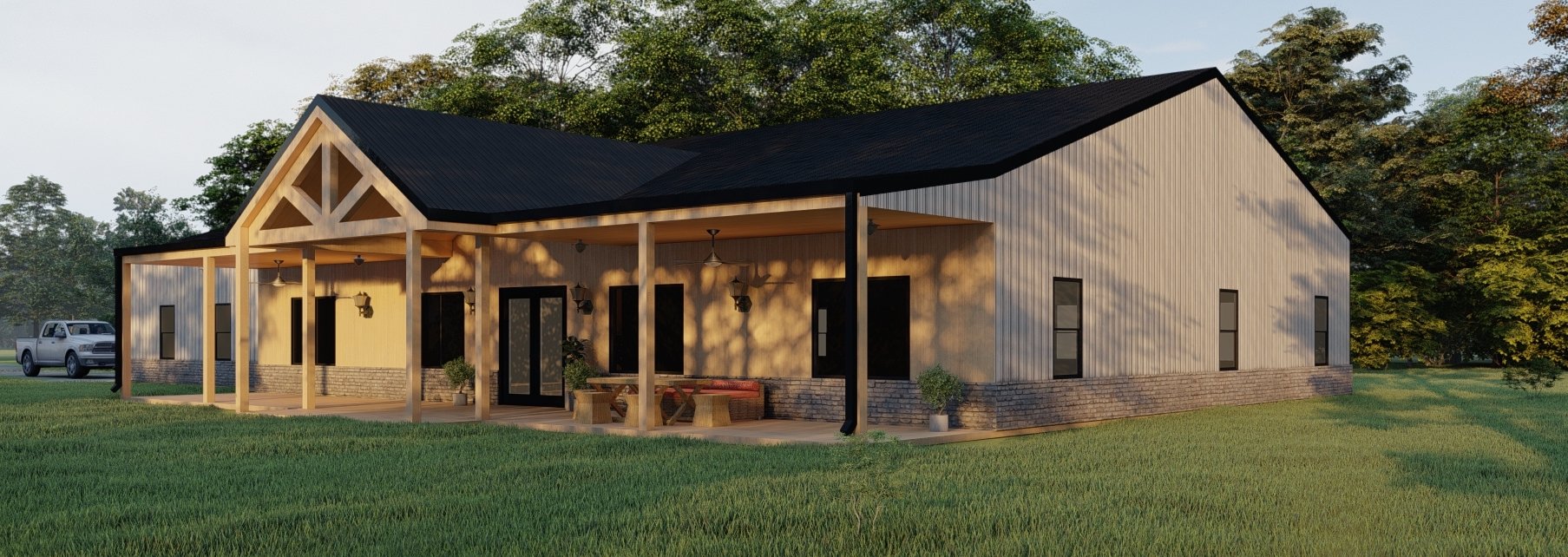Budget Friendly Barndominium Builder: Develop Your Perfect Living Room
Barndominiums Vs. Traditional Houses: a Detailed Comparison of Way Of Living and Performance
The choice between barndominiums and standard homes encompasses numerous elements, consisting of lifestyle preferences and useful requirements. Barndominiums are defined by their open formats and adaptability, commonly interesting those who prioritize public living and versatility. On the other hand, traditional homes supply a more structured atmosphere, which might much better serve families seeking personal privacy and a feeling of background. As we examine the cost ramifications and ecological factors to consider, it comes to be clear that the selection extends beyond mere looks and capability; it welcomes a much deeper expedition of what truly defines a home.
Overview of Barndominiums
Barndominiums, an unique housing pattern gaining popularity throughout various areas, mix the rustic appeal of barn-style style with the functionality of modern-day space. These special frameworks usually contain a metal or wood structure, combining open floor strategies and high ceilings with energy-efficient features. Typically positioned on expansive rural properties, barndominiums provide home owners the opportunity to take pleasure in a tranquil way of living while supplying ample space for various tasks.
The flexibility of barndominiums expands past their visual allure; they can offer as both living quarters and useful rooms for hobbies, workshops, and even little companies. Their flexible style permits easy customization, suiting diverse household requirements and choices. Lots of proprietors value the low maintenance demands connected with metal home siding and roof, contributing to long-lasting toughness.

Features of Traditional Houses
Stressing timeless style and convenience, conventional homes are defined by their distinctive architectural styles, which usually reflect historical influences and local visual appeals. Typical attributes consist of symmetrical facades, gabled roofings, and an emphasis on craftsmanship, resulting in a cozy and welcoming ambience.
Conventional homes commonly include components such as crown molding, wainscoting, and hardwood flooring, enhancing their classic charm. They normally include numerous areas with specified objectives, advertising family members communication while permitting privacy. website. The layout frequently includes formal living and dining locations, which are conducive to entertaining visitors and organizing family members celebrations
Outside products such as brick, wood, or stone are frequently made use of, adding to longevity and a feeling of durability. Barndominium builder. Furthermore, numerous traditional homes are designed with front porches or stoops, cultivating a feeling of neighborhood and connection with the neighborhood
Landscape design plays a considerable function in traditional home layout, with properly maintained gardens and click pathways that boost visual appeal - visit website. Overall, traditional homes personify a feeling of nostalgia and security, attracting those who value heritage and an extra structured living setting
Expense Comparison
Commonly, an expense comparison in between barndominiums and conventional homes discloses considerable differences in building and construction expenses and total investment. Barndominiums, commonly created from metal or steel structures, commonly incur reduced material and labor costs than conventional homes built from wood and block. The streamlined layout of barndominiums can convert to lowered building times, further decreasing labor expenses and expediting tenancy.
Typically, the cost per square foot for a barndominium varies from $100 to $150, while conventional homes can differ extensively, typically falling in between $150 and $300 per square foot, depending upon place, products, and layout complexity. This price difference makes barndominiums an eye-catching choice for budget-conscious purchasers looking for larger space without giving up top quality.
Additionally, barndominiums may cause lasting savings through lower maintenance expenses, power performance, and insurance rates. Their resilient building materials commonly call for much less maintenance over time compared to traditional homes. It is essential to consider that while initial prices might be reduced for barndominiums, the final investment will certainly additionally depend on private personalization and desired amenities, which can affect the total cost in both housing kinds.
Way Of Living and Area Considerations
When considering way of living and area, barndominiums provide an unique adaptability that interest a variety of homeowners. These hybrid frameworks integrate residential coping with practical area, commonly featuring open layout that can be adapted to match private demands. This versatility is particularly useful for households or people seeking a personalized living atmosphere, permitting varied usages such as office, workshops, or entertainment areas.

Furthermore, the aesthetic allure of barndominiums can provide to both rustic and modern preferences, making them a flexible choice for various design choices (Barndominium repair). Eventually, the option between a barndominium and a traditional home often pivots on just how well each choice lines up with the property owner's lifestyle desires and spatial needs, highlighting the significance of considering individual top priorities in the decision-making process
Ecological Influence and Sustainability
The environmental impact and sustainability of barndominiums existing compelling benefits compared to traditional homes. Largely built from steel and other long lasting materials, barndominiums are often constructed using recycled sources, minimizing the demand for brand-new materials and lessening waste. Their design commonly highlights open rooms, which can cause reduced energy intake for heating and cooling compared to typical homes with more fractional formats.
Additionally, barndominiums can include sustainable attributes such as solar panels, rainwater harvesting systems, and progressed insulation techniques, improving their power efficiency. The adaptability of their design enables home owners to integrate these innovations extra seamlessly than in lots of typical homes, which may need substantial retrofitting.
Additionally, barndominiums frequently need fewer resources for construction due to their less complex, extra reliable layouts (view now). Generally, barndominiums stand for a forward-thinking method to sustainable living, aligning with modern ecological concerns.
Final Thought
In recap, the choice between barndominiums and traditional homes hinges on specific way of life choices and practical needs. Barndominiums, with their open layouts and lasting products, cater to those looking for flexibility and common living.